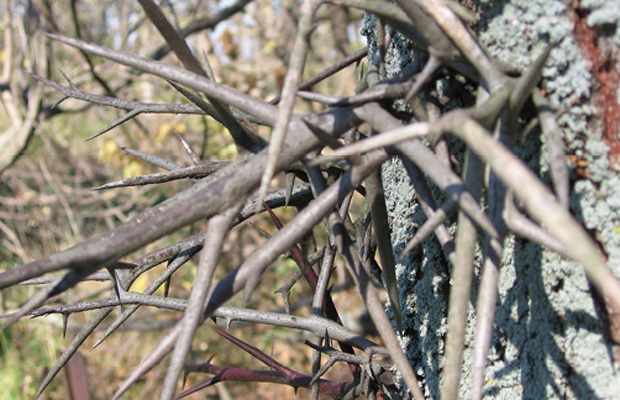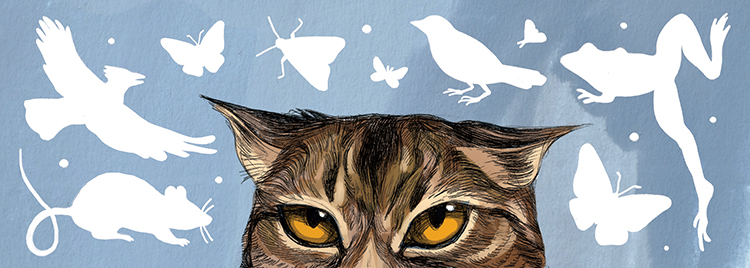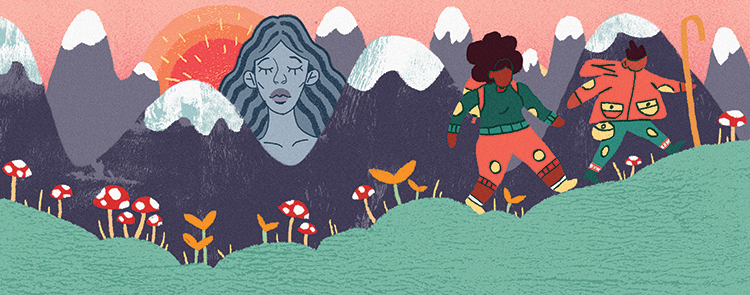 story by Bernard Brown l photo by flickr user over_the_rainbow
story by Bernard Brown l photo by flickr user over_the_rainbow
What amazed me most about the honey locust trees at Awbury Arboretum were the thorns. I had imagined something like rose thorns—sharp, but proportional—not four-inch-long spikes jutting out from branches and erupting from trunks in grotesque, savage clusters. Surely this was overkill. The trees could fend off deer with much less.
Honey locust trees can be found throughout the city, but these are tame trees. They have an elegant, spreading canopy with small leaves that screen the sun rather than block it completely. What they don’t have is thorns. The smooth versions are “a genetic sport [mutation] that showed up and people liked them,” explains Dennis Lucey, Awbury Arboretum’s landscape manager. We choose nice, gentle trees for our landscaping, nothing with spikes that could go clean through your hand.
We like locust trees for other reasons: They are tough plants that can withstand air pollution, road salt and compacted soil—all things that make urban environments a nasty place for a tree. Moreover, those small leaves (technically leaflets, since the stem, with the row of leaflets on either side, is considered a “compound leaf”) are easy to clean up in the fall.
But I miss the thorns, and not just for their gory potential. The thorns remind us that we inhabit a world shaped by extinct creatures. I’m not talking about dinosaurs; rather extinct mammals that shared the Delaware Valley with its first humans at the end of the last Ice Age.
It might be easy to forget that these marvelously giant and exotic beasts (including saber-toothed cats and ground sloths the size of elephants, not to mention actual mammoths and mastodons) lived where we do today, but the trees remember.
Or at least their genes do.
Trees that evolved over millions of years along with giant herbivorous mammals still bear the traits shaped by them, even if they’re no longer useful. This is likely how honey locust trees ended up with thorns big enough to intimidate a mammoth, and is probably why they have foot-long seed pods as well—think string beans for giant ground sloths, who would subsequently disperse their seeds. Twelve thousand years ago might sound like a long time for a human, but it’s only 60 generations or so for the trees.
Honey locusts aren’t the only trees around us likely shaped by extinct giants. Next time you’re passing the Bala Golf Club on Belmont Avenue, look at the Osage orange trees along the fence. Thorny with round, green, softball-sized fruit, the trees don’t appeal to our extant native critters, implying extinct animals once dispersed the seeds.
Of course, long-lived trees tell other stories we’ve forgotten. Lucey referenced some old locust trees at Awbury, planted in what appears to be an arbitrary line. Back in the late 1800s, the line was planted to screen a small slum, McNabb Town, from view. McNabb Town was razed more than a hundred years ago, but the trees remain.
READ MORE about honey locusts, Osage organes and other plants likely shaped by extinct animals in the Ghost of the Evolution by Connie Barlow (Basic Books, 2002; $19).
Bernard Brown is an amateur field herper, bureaucrat and founder of the PB&J Campaign (pbjcampaign.org), a movement focused on the benefits of eating lower on the food chain.



